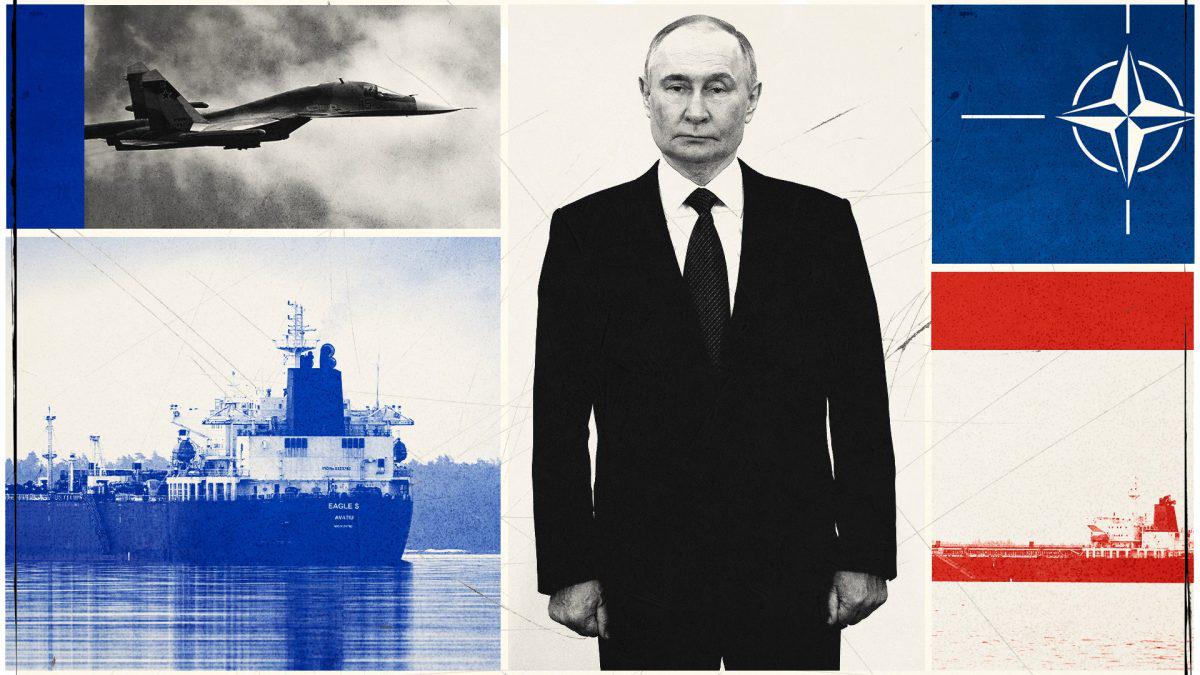
How Putin’s shadow fleet of ageing oil tankers could trigger a war with Nato
How Putin’s shadow fleet of ageing oil tankers could trigger a war with Nato
Posted by theipaper


How Putin’s shadow fleet of ageing oil tankers could trigger a war with Nato
How Putin’s shadow fleet of ageing oil tankers could trigger a war with Nato
Posted by theipaper
4 comments
In the Baltic Sea, an Estonian patrol vessel and helicopter move in to investigate an oil tanker.
The tanker is sailing without a national flag – a requirement of international law – and an urgent message is relayed to the ship’s bridge.
“This is Estonian warship… follow my instructions, alter your course to 105 immediately.” A boarding operation seems imminent.
But what happens next is unprecedented, and very dangerous. Out of nowhere, a Russian Su-35 fighter jet arrives to escort the tanker. Unsurprisingly, the Estonian patrol vessel peels away; the boarding is aborted.
This is the incident which unfolded last month when the Estonian navy attempted to intercept the Jaguar – a tanker which is believed to be part of the so-called [“shadow fleet” which Vladimir Putin uses to evade Western oil sanctions](https://inews.co.uk/news/uk-announces-fresh-russia-sanctions-aimed-at-putins-shadow-fleet-3684599?srsltid=AfmBOoocDhh3RGWcgePE-kSNSSQJSQadV6rtfyDnqrMs_ebp63RqukDh&ico=in-line_link).
It marked the first time that Russia had dispatched a military asset to chaperone a vessel from the fleet – and in Nato airspace, no less. The Su-35 was hastily escorted away by Nato fighter jets.
The incident underlined just how important the motley armada of often ageing tankers is to bankrolling Russia’s invasion of Ukraine, with Western officials suspecting that the ships may also be being used for other nefarious activities, such as [cutting undersea cables](https://inews.co.uk/news/world/fears-of-sabotage-after-undersea-cable-between-germany-and-finland-severed-3387806?srsltid=AfmBOopgeFWd452coNMH8bmhqXniG3QSj5in1cvNvVRfjmKgK8dbe204&ico=in-line_link).
But beyond that, the episode has rung alarm bells across Western capitals about the risk that an incident involving the shadow fleet could trigger a major clash between Nato and Russia.
# The birth of the shadow fleet
To understand the shadow fleet, it is necessary to go back to December 2022.
As punishment for [Putin’s full-scale invasion of Ukraine earlier that year](https://inews.co.uk/news/world/russia-when-invade-ukraine-2022-why-putin-started-war-timeline-conflict-2160097?srsltid=AfmBOop9VvWxdxLAUnsVIVhIia_GK8OO1snwZ8ILQMmBDEVofsZnzDQq&ico=in-line_link), the G7 and its allies introduced a cap on the price of Russian oil of $60. The aim of the cap was to keep Russian oil flowing because of its importance to the global economy, while squeezing the revenues Putin relies on to fund his war.
To enforce wider compliance, Ukraine’s western allies deny insurance to tankers involved in the trade of Russian oil unless that trade is verifiably below the price cap.
In a bid to get round the cap, the shadow fleet was born.
The vessels use ‘flags of convenience’ – flags of a nation other than the country of ownership – murky ownership structures, and other tactics such as ship-to-ship transfers of oil to disguise what they are up to.
Sometimes the ships fly false flags or switch between different ones. In the case of the Jaguar, the ship moved from the register of Gabon to Guinea-Bissau, before sailing flagless.
NATO knows what those tankers are. They should announce that all known shadow fleet tankers will be sunk if they ever enter NATO waters and any aircraft escorting will be shot down as well
It is fascinating how “environmental concerns” over 10-20 year old tankers suddenly emerge the moment those tankers are purchased by Russia.
At the same time these concerns don’t seem to apply at all to non-Russian old tankers (reminder: 50% of the world tankers are more than 15 year old).
Sovereign patrol boats bullied by Russian jets until NATO jets show up.
It’s not new but the tensions are higher than before.
Comments are closed.